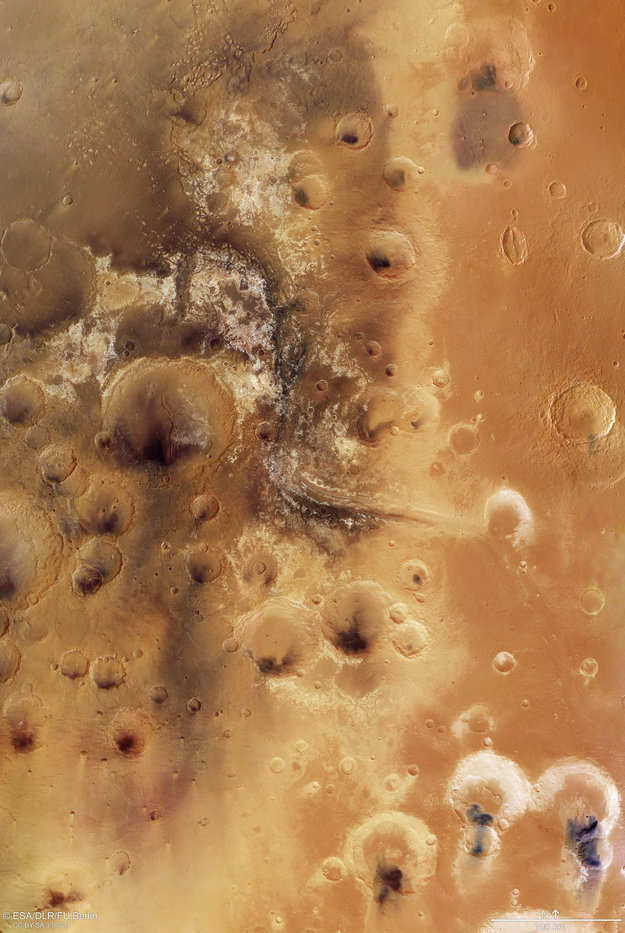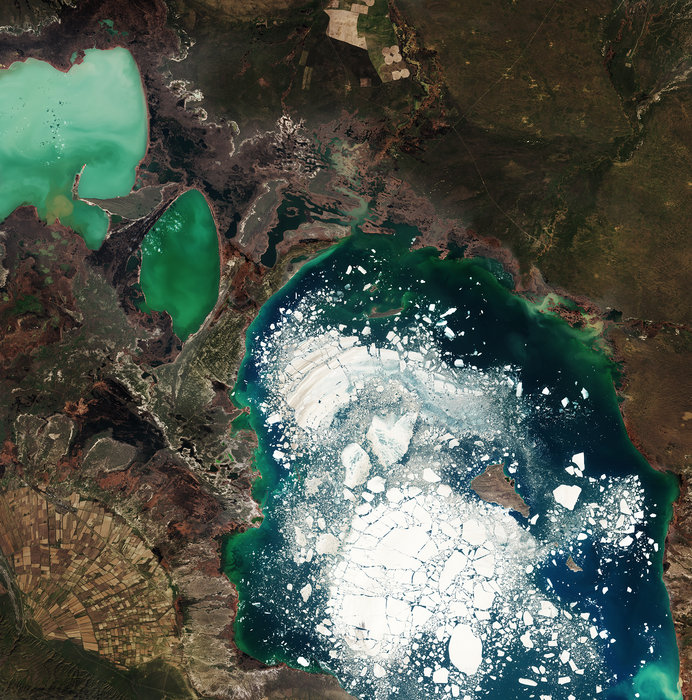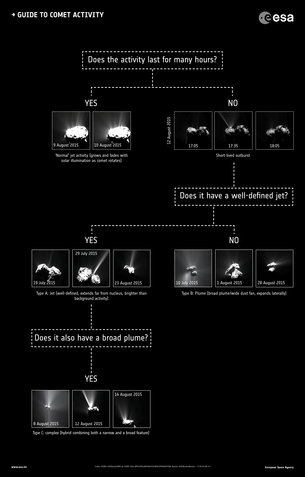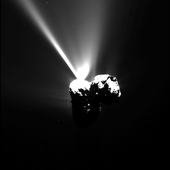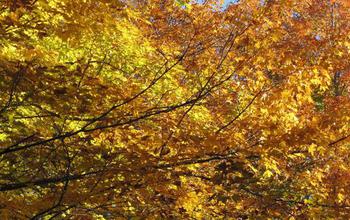Hola amigos: A VUELO DE UN QUINDE EL BLOG., en el Perú, desde el 28 de Julio del 2016; tenemos un nuevo Presidente el economista: Pedro Pablo Kuczynski Godard,, quien ganó las Elecciones Presidenciales, con una rara y jocosa campaña; la muchedumbre que lo eligió, tomó en cuenta las expresiones con clara CHACOTA (*), con que se refería a sus rivales; y más con la ayuda del odio visceral contra la adversaria: Keiko Sofía Fujimori Higuchi, en la Segunda Vuelta Electoral, la venció ajustadamente, con un poco más de 41,000 votos, que tal vez si hubiese ganado ella, si el ahora ex presidente Ollanta Humala Tasso, no hubiese inmovilizado a los votantes policiales y militares con clara inclinación a la candidata Fujimori, quienes fueron impedidos en sufragar en la Segunda Vuelta, fue una ayuda estratégica con evidente éxito, seguramente más tarde le pagarán a Ollanta este "favorcito".

Aquí en la imagen observamos a la izquierda a un pensativo y afligido Cardenal Juan Luis Cipriani Thorne, al centro al triunfante Presidente Pedro Pablo Kuczynski Godard, y a la derecha sobre el piso aun que un poco sonriente a Keiko Sofía Fujimori Higuchi. Foto del Archivo del Blog: A Vuelo de un Quinde.
FRASES DE SU CAMPAÑA POLÍTICA:
Sábado 26 de marzo 2016
"Una media roja que dice sabe hacer las cosas y nunca ha hecho nada en su perra vida"
Frase en alusión a Verónika Mendoza (Diario Perú 21)
Domingo 03 de Abril 2016
“El gas de Camisea se gestó al final del gobierno de Alberto Fujimori”.
Frase en alusión al ex presidente Alberto Fujimori Fujimori(Los Andes)
Domingo 3 de abril del 2016
"Yo comprometo a ponerte en el Perú moderno" .
Debate Presidencial de los Candidatos a las Elecciones Generales(LAMULA.Pe)
Miércoles 27 de abril 2016
"Lo que tenemos que hacer es tener piedad y misericordia a favor de alguien mayor, quizás en mala salud. Si el Congreso da una ley general que dice que personas que sufren de estas características pueden cumplir su pena, no conmutación, no indulto, perdón, pero si cumplir su pena en su casa, yo siempre he dicho que firmaré esa ley"
Frase en alusión a Alberto Fujimori Fujimori.(Diario Perú21)
Sábado 07 de Mayo del 2016
PPK llegó a Trujillo en busca de conquistar un norte naranja
Candidato de Peruanos por el Kambio llegó a La Libertad, región en la que Keiko Fujimori lideró en la primera vuelta .
“Yo cuando termine [mi gobierno], el 28 de julio de 2021, no voy a buscar una dinastía o poner a mi hija o a mi hijo, no sé. Yo me voy a mi casa y se acabó, como debe ser” .
Se refirió a los Fujimori(Diario El Comercio)
Miércoles 25 de Mayo 2016
"Hijo de ratero es ratero también, de tal palo tal astilla ...Qué imagen va a proyectar el Perú si eligen a la hija de quien está en la cárcel por corrupción”.
Frase en alusión a su rival Keiko Fujimori Higuchi (Diario Perú21)
Domingo 29 de Mayo 2016
" Tu no has cambiado nada pelona"
Frase en Alusión a su rival Keiko Fujimori Hoguchi(Diario Perú21)
Domingo 29 de Mayo del 2016
A continuación puedes leer el discurso final del candidato de Peruanos por el Kambio:
'Quiero ser presidente de nuestro Perú por dos razones fundamentales. La primera es para servir a los peruanos, quiero dejar un país próspero donde se elimina la desigualdad, donde las pequeñas empresas y todos tienen trabajo.
Tengo otra razón: quiero defender la democracia. Es lo único que funciona. Los regímenes dictatoriales no funcionan. No más grupo Colina, no más esterilizaciones forzosas. Tenemos que cerrar el camino a candidatos que no tienen corrupción, que no son transparentes. Eso es fundamental.
¿Qué ha pasado en los últimos días? Lo hemos visto con el señor Joaquín Ramírez y el señor José Chlimper. Eso no es un buen augurio para el gobierno de la señora (Fujimori).
'¿Cómo has cambiado pelona?', me dijo [Keiko Fujimori en el último debate]. Bueno, yo le diría que tú no has cambiado pelona, eres la misma... (risas y aplausos).
Yo creo en la libertad. Estoy convencido que ahora esta libertad en grave riesgo en el Perú, por eso yo quiero hacer una llamado a todos los peruanos de cualquier convicción política para defender la libertad y cerrarle el paso con nuestros votos al retorno de la dictadura, la corrupción y la mentira. Es ahora o nunca, ciudadanos.
Hasta la última mesa, hasta el último voto. ¡Viva el Perú! (vivas)'.
La contundente frase de PPK contra Keiko Fujimori en el final del debate(Diario La República)
FRASES COMO PRESIDENTE DE LA REPÚBLICA :
Jueves, 07 de Julio del 2016
PPK pide a trabajadores de Doe Run marchar al Congreso
Presidente electo dijo que La Oroya “está agonizando” y que él es partidario de que el complejo metalúrgico siga operando
PPK pidió hacer a los trabajadores hacer un pacto con él para que “ustedes me ayuden con el Congreso y yo los ayudo para que esto salga adelante”. “Ustedes saben quién controla el Congreso [el fujimorismo]. Hagamos una marcha al Congreso y no dejen morir La Oroya”, anotó.
Información del Diario El Comercio
Lunes, 1° Agosto del 2016
El presidente de la República, Pedro Pablo Kuczynski, concedió su
primera entrevista como mandatario al diario español El País y aseguró que el fujimorismo tiene "malas maneras" en el inicio de su mandato, pero que no le afecta.
."No todos los 73 congresistas de la bancada fujimorista son miembros del partido, habrá como 30 que se subieron al carro creyendo que ella ganaba y que recibirían una prebenda. Lo que hay que trabajar desde un punto de vista completamente egoísta es jalarse a algunos de esos. Si no lo hacemos va a ser difícil trabajar en el Congreso, más allá de la pequeña luna de miel que ojalá tengamos en las próximas semanas. Pero no espero una gran colaboración,
espero que sean neutralmente tolerantes"
El presidente de la República también habló sobre la mayoría de Fuerza Popular en el Congreso, explicando que habrá que "seducir" a algunos.(RPP Noticias)
Lunes, 1° Agosto del 2016
'Desjoder el Perú'. "Bueno, aún hay mucha gente que está jodida. Hay que desjoder Perú y eso cuesta plata. Tenemos que buscar una política centrista: poner mucho énfasis en el lado del bienestar donde estamos muy atrasados —salud, agua, educación— y, del otro lado, necesitamos una economía de mercado que financie todo eso", dijo en referencia a la novela Conversación en La Catedral de Mario Vargas Llosa.
Información de RPP Noticias.
Lunes, 1° Agosto del 2016
El presidente Pedro Pablo Kuczynski (
PPK) comentó las expresiones del arzobispo de Lima, cardenal
Juan Luis Cipriani, quien el sábado dijo que los abusos contra la mujer:
"son muchas veces porque la mujer se pone como que en un escaparate, provocando" .
PPK dijo al respecto, en un breve diálogo con la prensa en Palacio de Gobierno:
"Estoy seguro de que él [Juan Luis Cipriani] no ha querido decir lo que se interpreta" .
Información del Diario El Comercio.
Martes, 23 de Agosto 2016
“le quedan 29 días y le va a consultar al cardenal primero” .
PPK ironizó sobre Cipriani y píldora del día siguiente (Diario El Comercio)
Martes 30 de Agosto 2016
Dijo el Cardenal Juan Luis Cipriani Thorne, :
“Todos nosotros sabemos que nuestro amor a la Iglesia nos lleva a tener ese respeto y amor a las autoridades y a la patria. Y a las autoridades les lleva a saber que siempre contarán con el respeto, y al mismo tiempo, como dice la escritura: a Dios lo que es de Dios, al César lo que es del César. Jamás habrá interferencia” .
Comentó el Presidente Pedro Pablo Kuczynski Godard :
“Creo que dio un sermón muy bonito, muy conciliador” .
Ceremonia en honor a Santa Rosa de Lima (Diario Correo 31/08/2016)
UN ASUNTO QUE NUNCA SE HA ACLARADO:
Domingo 08 de mayo del 2016 | 11:16
El verano del 69: PPK y la página 11 en la maletera [CRÓNICA]
El ‘trolleo’ de campaña ha difundido esta historia:
PPK robó la página 11, la mítica hoja del contrato entre el Perú y la International Petroleum Company (IPC) que, al desaparecer, provocó tal escándalo que Juan Velasco lo usó de coartada para derrocar a Fernando Belaunde en octubre de 1968.
¿Tiene asidero tamaña especie? No. Es una leyenda urbana. Lo único que encaja es que no se sabe quién desapareció la bendita hoja y PPK ya era un muchachón con conexiones en 1968. Pero, vamos, no se le conocen antecedentes de ladrón ni de espía, ni estuvo en el cargo indicado para meter mano al legajo entre una transnacional y nuestra Empresa Petrolera Fiscal (EPF).
Más bien, PPK sí estuvo, pocos meses después, en pleno verano de 1969, envuelto en otro lío que enfrentó al Estado Peruano con la IPC. Pero vayamos por partes.
—La bendita página—
La IPC tenía, desde 1922, condiciones en extremo ventajosas para explotar petróleo en el norte peruano. Poseía los yacimientos de La Brea y Pariñas, y controlaba todas las instancias del mercado. Era una situación insostenible para cualquier gobierno de relente nacionalista. El de Belaunde lo era. Algunos medios periodísticos lo alentaban a que tomara los yacimientos y renegociara con la IPC.
Quien más reclamaba una salida nacionalista era Carlos Loret de Mola, el gerente de la EPF. Hasta que fue llamado a Palacio en la noche del 12 de agosto de 1968. Allí encontró a Belaunde con varios ministros y a Fernando Espinosa, el jefe de la IPC, con ejecutivos de su empresa y diplomáticos gringos.
En “La página once” (Ed. Libre1, 1978), cuenta de las idas y venidas de ambos bandos, con las hojas del contrato. La entrega de La Brea y Pariñas ya estaba asegurada, pero Loret de Mola bregó hasta que anotó de puño y letra, en la última página, la 11, el precio mínimo garantizado (US$1,0835) que la IPC le cobraría por barril a la EPF.
A Loret de Mola le marcó la vida lo que sucedió esa madrugada. El 13 fue un día suspendido en el tiempo, pues fue con Belaunde a Talara, a la toma simbólica de La Brea y Pariñas, y a la firma del Acta de Talara, que no era más que el inventario de lo entregado. Los diarios y la TV mostraron la bandera peruana flameando ante las torres.
Pero Loret de Mola sabía que era una farsa. La IPC seguía controlando las bocas de salida del petróleo y había desaparecido la página 11 del contrato. El funcionario lo denunció a cuanta autoridad pudo. Pero los ministros belaundistas no le hicieron caso; estaban hasta el copete manejando su crisis de gobernabilidad. Entonces fue a la televisión y contó, en los canales 4 y 5, que funcionarios corruptos se habían confabulado con la empresa extranjera.
Tal fue la conmoción, que precipitó el golpe de Estado del 3 de octubre. Y pocos días después vimos, manu militari, una nueva toma de Talara. Ese 9 de octubre se bautizó como Día de la Dignidad. Esta ocupación sí parecía ser definitiva. Pero tampoco lo era. Loret de Mola lo sabía y lo explica en las 600 páginas de sus memorias.
—¿Qué pinta en esto PPK?—
El joven Pedro Pablo tenía 30 años en 1968 y era uno de los precoces gerentes del Banco Central de Reserva, a las órdenes del gerente general Carlos Rodríguez Pastor. Sucede que, a pesar de los bombos y platillos con los que se anunció la estatización de la IPC, esta siguió controlando las bocas de salida del petróleo y remesando sus utilidades a la Standard Oil, su matriz en EE.UU. Para esto, necesitaba que el BCR le otorgara certificados de divisas, y el banco, como solía hacer en estos casos, le dio 13 autorizaciones desde octubre de 1968 hasta febrero de 1969. Las firmaron Rodríguez Pastor y PPK.
Loret de Mola, que había renunciado a la EPF pero era un referente en materia petrolera, le advirtió al propio Velasco que todo seguía igual en Talara. En su libro cuenta: “Velasco quería ponerse a cubierto de críticas por su inacción, y montó un aparato de investigación y punición [...] Designó la Comisión Carbonel que, naturalmente, acusó a muchos funcionarios del Gobierno, del BCR y de los ministerios de Hacienda y Fomento” (pág. 516).
La comisión presidida por el vicealmirante Enrique Carbonel se instaló el 27 de febrero y, con asombrosa celeridad, evacuó su informe el 15 de marzo. Este se publicó en El Comercio del 16 y señala a los responsables de que la IPC haya remesado S/2.000 millones de la época. En el punto E se dice: “Hay responsabilidad del gerente general doctor Carlos Rodríguez Pastor y del gerente Pedro Pablo Kuczynski, que decidieron los 13 otorgamientos de certificados de divisas sin las respectivas resoluciones ministeriales”. Más adelante también se culpa al consultor legal del BCR Francisco Moreyra García por asesorar a sus gerentes para que otorgaran los certificados sin el respaldo ministerial.
Conversé con Richard Webb, que trabajó en el BCR de aquel entonces, y me dijo lo siguiente, a propósito de los apuros de Rodríguez Pastor, de PPK y de Sandro Mariátegui, ex ministro acciopopulista que fue encarcelado luego del golpe: “Es el campo minado en la vida de todo funcionario público. Siempre hay un trámite que no se cumplió y por eso existen denuncias”.
Por supuesto, pedí a PPK su versión sobre el informe de la Comisión Carbonel. Me envió estas líneas: “El Gobierno militar buscó chivos expiatorios en los directivos del BCR de entonces. Nos acusaron de haber otorgado divisas sin autorización ministerial. Fuimos perseguidos y tuvimos que salir del país. Luego de un proceso judicial que duró 8 años, la Corte Suprema de Justicia nos absolvió de los cargos que nos hicieron a varios directivos del BCR”.
PPK suele contar que se fugó por la frontera con Ecuador en la maletera de un Volkswagen. Con semejante bautizo, conoce perfectamente los riesgos de la tramitología y de las relaciones peligrosas entre el poder y las grandes empresas.
Por: Fernando Vivas, periodista del Diario El Comercio
(*) La palabra : CHACOTA; la define el diccionario como:
1.
Bulla y alegría ruidosa con que se celebra una cosa.
2.
Burla o chanza que se hace de una cosa o de una persona.
"delante tuyo todos dicen que sí por no llevarte la contraria, pero luego, cuando te vas, toman tus cosas a chacota"
CONTENIDOS RELACIONADOS:
http://elcomercio.pe/politica/gobierno/ppk-trabajadores-doe-run-hagamos-marcha-al-congreso-noticia-1914905
http://elcomercio.pe/politica/elecciones/verano-69-ppk-y-pagina-11-maletera-cronica-noticia-1899927
http://ppkamigo.blogspot.pe/
https://www.arzobispadodelima.org/notas/datosbio.htm
https://es-la.facebook.com/KeikoSofiaFujimoriHiguchi
http://keikofujimori.pe/
Guillermo Gonzalo Sánchez Achutegui
ayabaca@gmail.com
ayabaca@hotmail.com
ayabaca@yahoo.com
Inscríbete en el Foro del blog y participa : A Vuelo De Un Quinde - El Foro!

